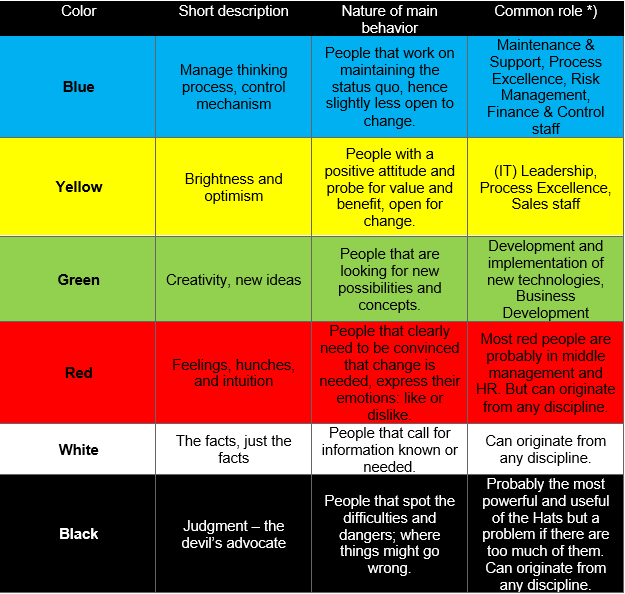Introduction
About two weeks ago (15th July) we published the first article in a series of eight about Change Management and the consequences for IT projects. It focused in-depth on Establishing a Sense of Urgency for IT projects and it concludes how the model of Sharpe & Hogdson can support in creating the required insight.
The experience from many different sources tells us that 75% of System Implementations fail to deliver their expected benefits. The one constant factor is that Change Management for People, Process, and Technology is not appropriately addressed. Business leaders often do not realize enough how important this is or don´t know how to achieve it. Simply stated, but not so easily done.
This week we will look at step 2 (out of 8) of the model of Kotter: Forming a Powerful Guiding Coalition.
You are encouraged to read further if you want to ensure your project ends up in the 25% quadrant.
The model of John Kotter for Change Management
This model was introduced by John P. Kotter, leadership and change management professor at Harvard Business School, in his 1995/2012 book, “Leading Change”. The model defines 8 key steps for change management, arguing that skipping any of the steps can be enough for the whole project to fail. Below we will go through step 2 of the model and show what it means for IT projects.
- Establishing a sense of urgency
- Forming a powerful guiding coalition
- Actions needed
- Assemble a coalition of the willing with enough power
- Make teamwork happen outside of regular structures
- Pitfalls
- No teamwork at management level
- Not enough power to lead
- Consequences for IT projects
- You will need to align People, Process, and Technology. It starts with management. Only when management realizes that ultimately there is no difference between Business and IT, you can realize a truly powerful guiding coalition
- Actions needed
What is important here is that Senior Management assembles a group of people with enough power to lead the change effort and with a clear shared commitment. This group of people must be able to work as a team outside the normal business hierarchy or routines, despite their eventual different ideas. Only as a team, they will have sufficient power to lead change successfully and convince enough people in the organization that change is required.
Forming a powerful enough guiding coalition
The most common error is not creating a powerful enough guiding coalition. Kotter argues that “companies that fail in phase two usually underestimate the difficulties of producing change and thus the importance of a powerful guiding coalition”. In order to put together this powerful guiding coalition, the following questions must be taken into consideration:
- Are the key people on board?
- The main line-managers, to prevent the opposition from outside the team
- Other important stakeholders
- Do they have the right background?
- Different disciplines
- Different departments
- Different nationalities/cultures
- Are these people taken seriously enough by the organization?
- Reputation
- Communication skills
- Is there a balance between leadership and management skills?
- Enough leadership skills and willingness to take risks
- Management skills are essential but tend to oppose change
- Are they able and willing to work together as a team?
- Hierarchy tends to impede teamwork
- Balance in personality types
- Do they understand and share the sense of urgency?
- All on board for the same objective
Methods & Tools
In order to review the balance between leadership and management skills and the ability to work effectively as a team, you must have a close look at the personality types in your team. There should be a balance between the different personality types, too much or too little of certain types will mean less ability to drive change. A simple model that can be very well used here are the Six Thinking Hats by Edward the Bono. Classification of people into 6 different colors can help to ensure the required level of diversity in the “Guiding Coalition” and your project teams:

*) The “common role” is an addition to the model made by Q7 Consulting.
The right balance of people with different colored hats will help to avoid the typical pitfalls of too much leadership or too much management traits.
Consequences for IT projects
As stated in the previous article (“Establishing a Sense of Urgency”), IT projects are often underestimated because Business Leaders do not realize enough how integrated People, Process, and Technology are. A successful IT project always requires Change Management for all three. If an IT project is seen as technology only, or technology and just some minor process changes, then the need for proper Change Management is easily overlooked. So not only in the Guiding Coalition but also in the Project Team(s), a mix of people with different hats is essential for a successful project.
Without alignment between People, Process and Technology, it is almost certain that you will not be in the 25% of successful projects.
Conclusion
Not creating a powerful enough guiding coalition easily happens and therefore it should have your full attention prior to starting any IT project. Applying some simple model as the Six Thinking Hats will enable a much higher chance of success in your projects. Thus set properly the tone at the top, have a colorful Guiding Coalition and Project Team(s) so that you mobilize enough power to drive change!
Did you realize all this when you started your last IT project? Proper Change Management is key for successful IT projects! If you want more information or you have specific questions, you can book a free consulting session on our website: www.Q7-consulting.com
